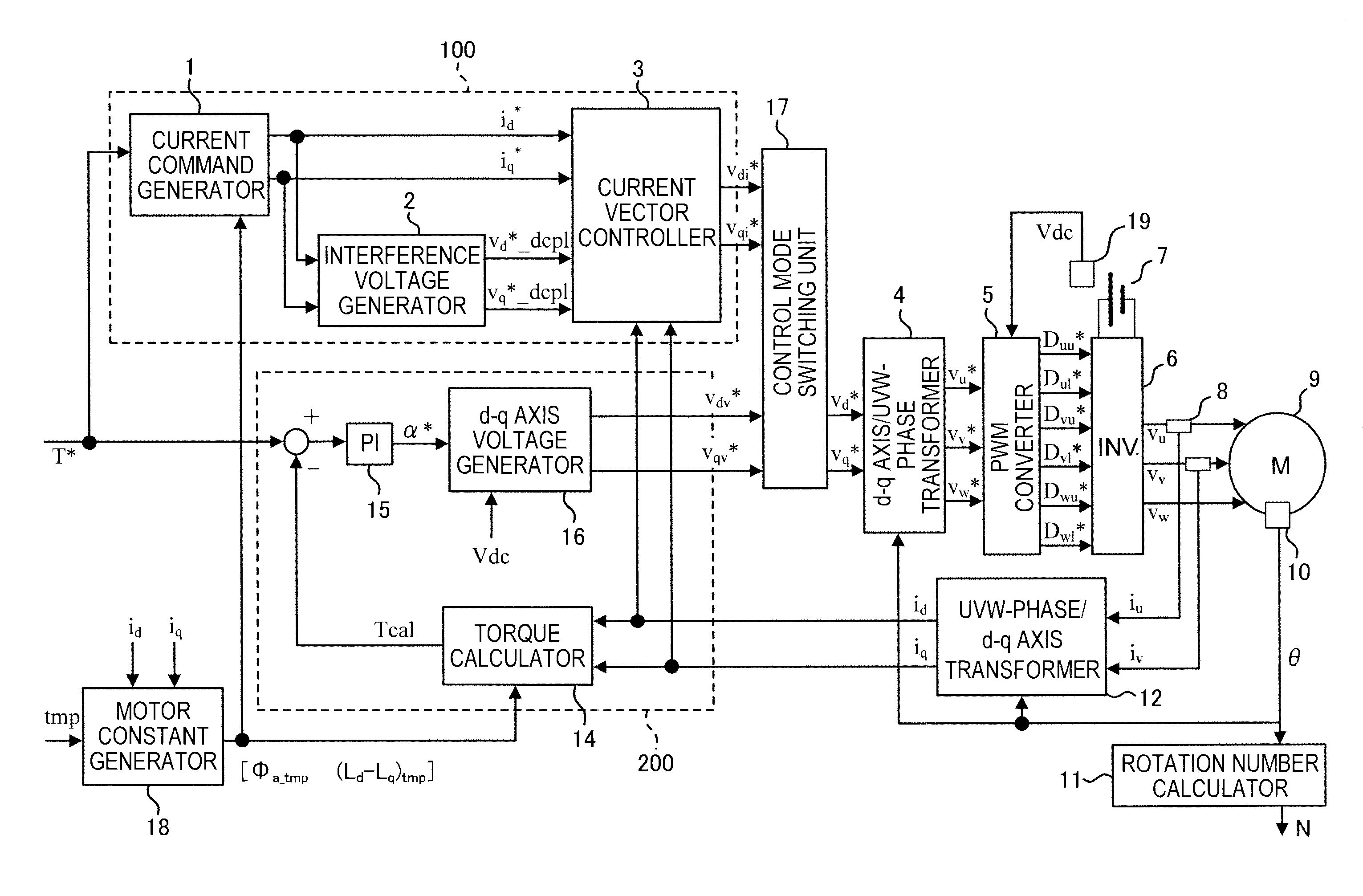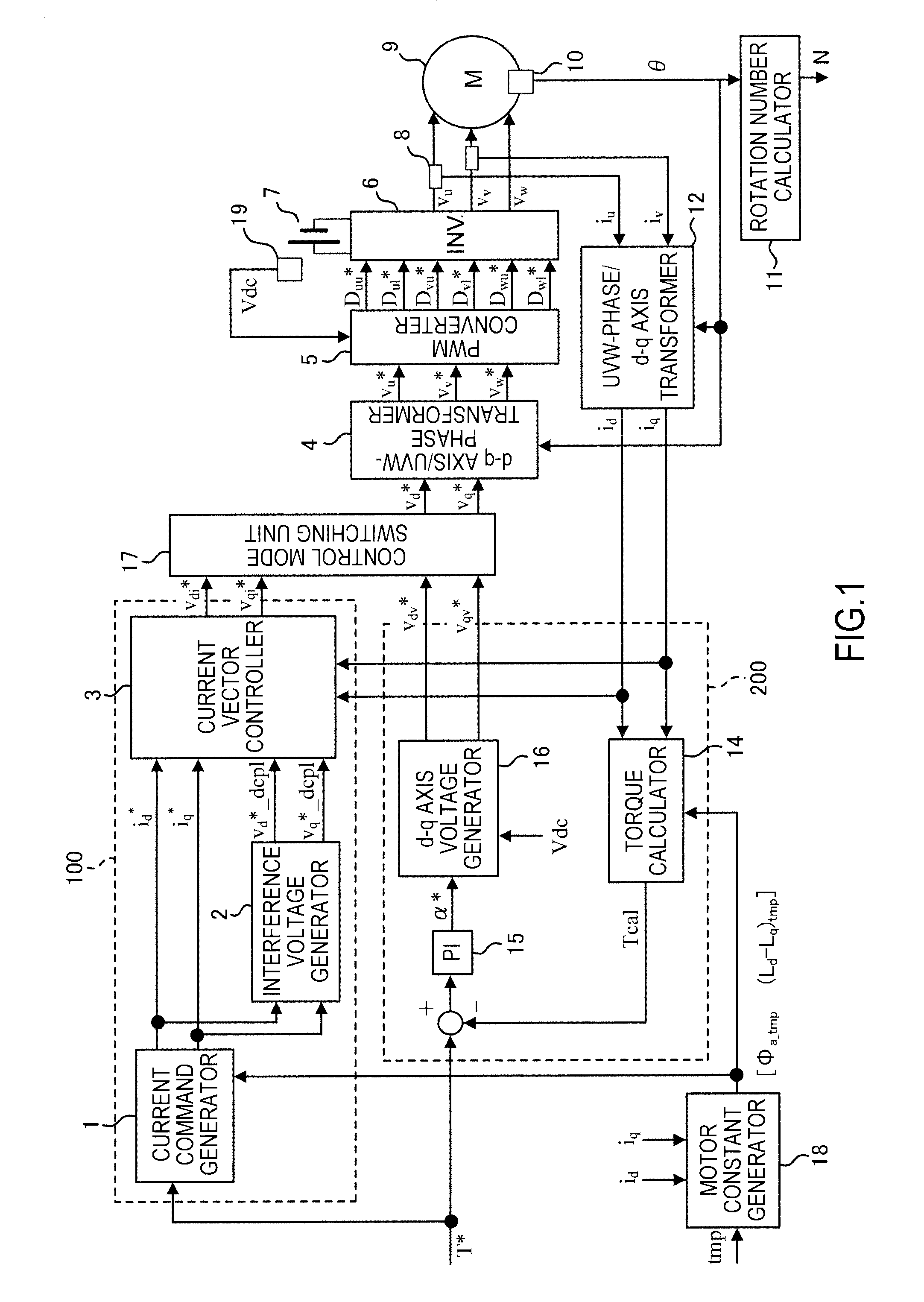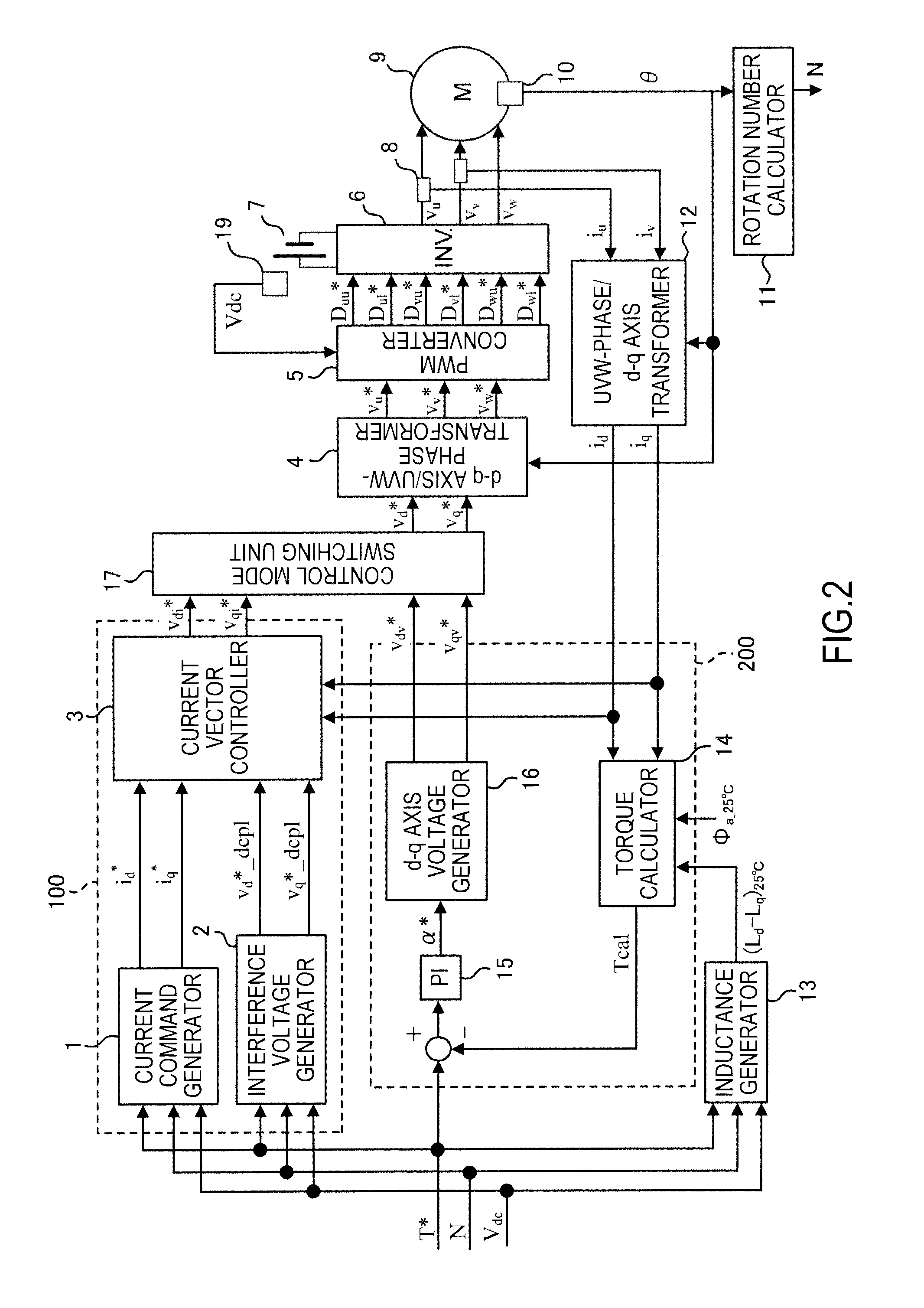Electric motor control device and electric motor control method
a technology of electric motors and control devices, which is applied in the direction of motor/generator/converter stoppers, dynamo-electric gear control, dynamo-electric converter control, etc., can solve the problems of increasing cost, increasing computation load, increasing computation load, etc., and achieving increased computation load, increased control performance, and increased computation load
- Summary
- Abstract
- Description
- Claims
- Application Information
AI Technical Summary
Benefits of technology
Problems solved by technology
Method used
Image
Examples
first embodiment
[0014]FIG. 1 is a control block diagram illustrating an electric motor control according to a first embodiment. This control is executed based on a flowchart described below.
[0015]The control according to the first embodiment is performed by switching between a current control mode and a voltage phase control mode depending on a driving state of an electric motor. The current control mode is a control mode performed to match a current command value based on a torque command value and a motor constant corresponding to a magnet temperature of an electric motor 9. The voltage phase control mode is a control mode in which a torque feedback operation is performed for a voltage phase based on a difference between a torque command value and a torque estimation value obtained from a torque computation formula. In addition, the mode switches to the voltage phase control mode in a high rotation area where a flux weakening control is performed.
[0016]A current control unit 100 in FIG. 1 include...
second embodiment
[0039]FIG. 2 is a control block diagram illustrating an electric motor control according to a second embodiment. This control is executed based on the flowchart described below.
[0040]According to the second embodiment, the magnet temperature tmp is set to a fixed value (25° C.), and an inductance generator 13 is provided instead of the motor constant generator 18. As a result, the computation performed in the current control unit 100 and the voltage phase control unit 200 is different from that of the first embodiment. Hereinafter, a description will focus on a difference from the first embodiment. It is noted that the temperature “25° C.” is set based on a performance guarantee temperature or an ambient temperature of an operational environment in order to fix the magnet temperature tmp, and the invention is not limited thereto.
[0041]A description will now be made for the current control unit 100.
[0042]The current command generator 1 receives the torque command value T*, the rotati...
third embodiment
[0049]FIG. 3 is a control block diagram illustrating an electric motor control according to a third embodiment. This control is executed based on the flowchart described below.
[0050]Hereinafter, a description will focus on a difference from the second embodiment.
[0051]The current command generator 1 and the interference voltage generator 2 receive the torque command value T*, the rotation speed N, and the battery voltage Vdc and generates and outputs the d-q axis current command values id* and iq* and the d-q axis interference voltage values vd—dcpl, vq*—dcpl at tmp=25° C. by referring to a table created in advance through experiment or computation. It is noted that, as a pre-requisite of the table creation, a modulation rate M* in a saturation area of the motor application voltage, that is, in a flux weakening area is equally set to the modulation rate M* used when the d-q axis voltage generator 16 calculates the d-q axis voltage command values vdv* and vqv* for the voltage phase c...
PUM
 Login to View More
Login to View More Abstract
Description
Claims
Application Information
 Login to View More
Login to View More - R&D
- Intellectual Property
- Life Sciences
- Materials
- Tech Scout
- Unparalleled Data Quality
- Higher Quality Content
- 60% Fewer Hallucinations
Browse by: Latest US Patents, China's latest patents, Technical Efficacy Thesaurus, Application Domain, Technology Topic, Popular Technical Reports.
© 2025 PatSnap. All rights reserved.Legal|Privacy policy|Modern Slavery Act Transparency Statement|Sitemap|About US| Contact US: help@patsnap.com



